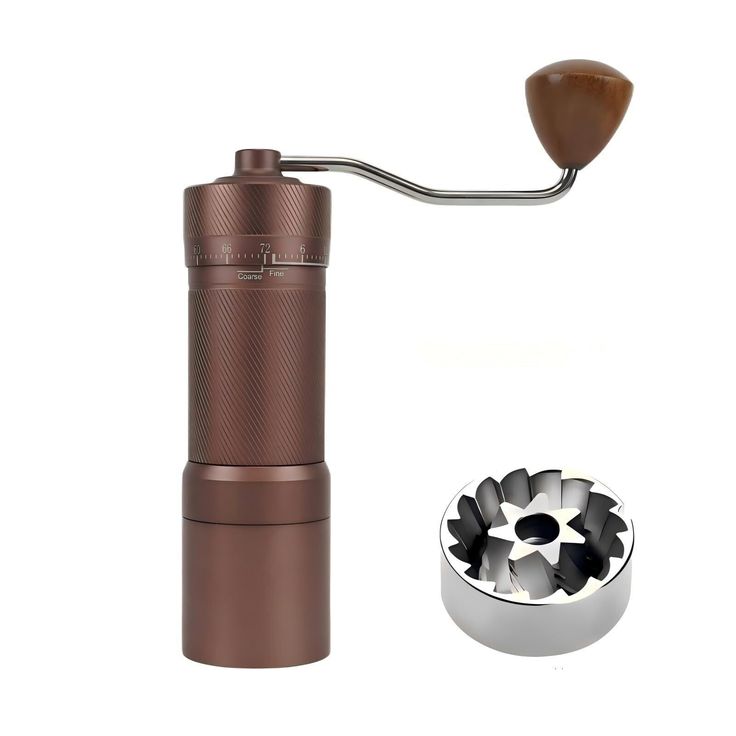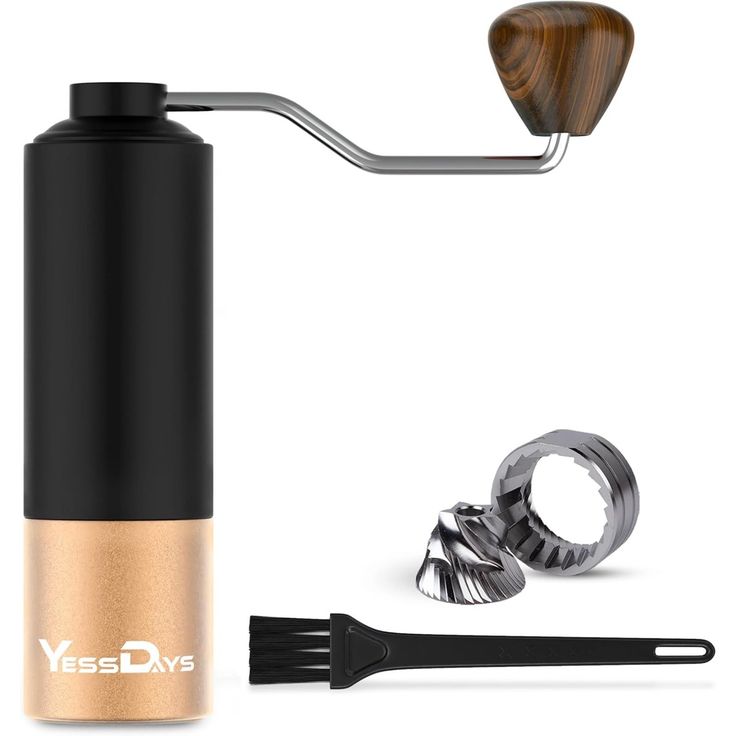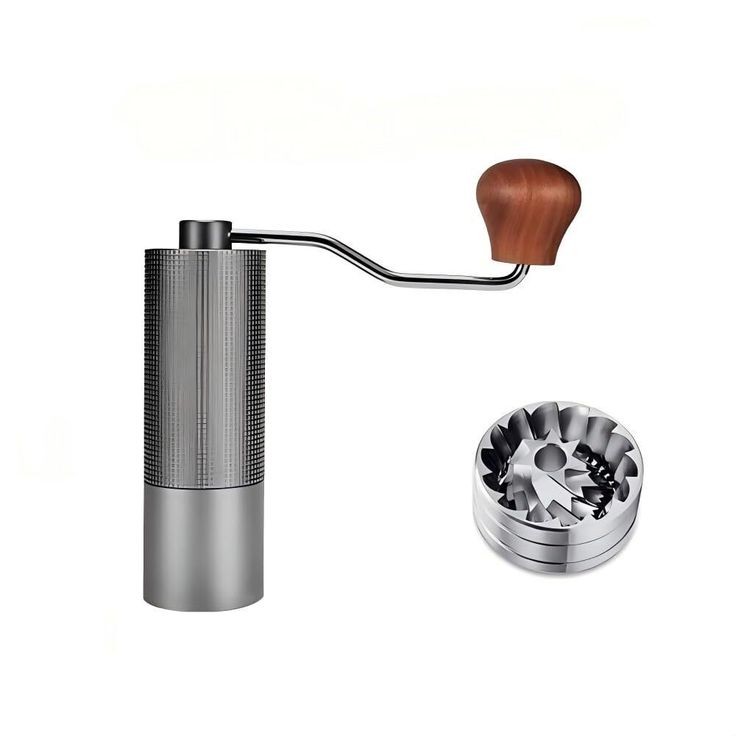Introduction to Coffee Grinder Burrs
Coffee grinders play a vital role in brewing the perfect cup of coffee, and they utilize burrs to grind beans into uniform grounds. Burrs are essential components that significantly influence the quality of the grind. Understanding the types of burrs and the importance of their maintenance can enhance your coffee experience.

Types of Coffee Grinder Burrs
- Conical Burrs:
- Shaped like a cone, they offer a consistent grind and reduce heat generation during grinding.
- Ideal for preserving flavor oils in coffee beans.
- Flat Burrs:
- Comprising two flat surfaces, they provide uniform grind size and are often preferred for espresso.
- Known for speed and efficiency in grinding.
Importance of Burr Maintenance
- Consistent Flavor:
- Regular maintenance helps ensure that coffee grounds are uniform, which directly affects the taste.
- Longevity of Burrs:
- Cleaning and proper care can prevent unexpected replacements, saving you money and hassle.
- Optimized Performance:
- Well-maintained burrs keep the grinder operating effectively, enhancing overall brewing quality.
By understanding and caring for the burrs in your grinder, you invest in a better coffee experience.
Signs It’s Time to Replace Your Burrs
As an avid coffee lover and seasoned barista, noticing subtle changes in your coffee’s taste can indicate it’s time to check your grinder’s burrs. Understanding when to replace burrs on your coffee grinder is key to maintaining the best flavor and aroma from your coffee. Here we’ll explore the signs that your grinder burrs might need replacing and the steps to take to assess their condition.
Tasting Changes in Your Coffee
If your coffee starts to taste different, it could mean your burrs are worn. Look for flavors that lack boldness or richness, as this could suggest your grinder isn’t producing consistent grounds.
Physical Dullness of Burrs
Check the edges of your burrs by safely inspecting them. If they feel blunt when touched, it’s likely time for a new set. Remember, always disconnect the grinder from power before inspecting.
Inconsistency in Grind Size
Notice if your coffee grounds are uneven in size. A mix of large and tiny grounds means your burrs aren’t cutting beans evenly anymore.
Clumping of Coffee Grounds
When grinding, especially for espresso, clumpy grounds can signal dull burrs. Fresh and sharp burrs produce fluffy, even grounds.
Difficulty Grinding Coffee Beans
If your grinder struggles to process beans or feels sluggish, the burrs might be blunt or damaged. This can lead to poor performance and flavor loss.
By staying alert to these signs, you can ensure your coffee experience remains top-notch. Regular maintenance and timely replacement of your coffee grinder burrs are important for an exceptional brew every time. Keep enjoying your aromatic and flavorful cups of coffee by paying close attention to these indicators.

Calculating the Lifespan of Coffee Grinder Burrs
Knowing how often to replace burrs on a coffee grinder is key. The lifespan of coffee grinder burrs depends on many factors. By estimating how long they last, you can plan for replacements.
Estimating Burr Wear and Tear
To estimate burr wear and tear, consult the grinder’s manual. It often states how many pounds of coffee the burrs can handle. Stainless steel burrs might need replacement after 500 to 600 pounds of coffee. Ceramic burrs can last longer, up to 800 pounds. On average, a person grinding one pound per week could see their burrs last around 10 years.
Factors Influencing Burr Longevity
Several factors influence how long your burrs will last. These include:
- Type of Grinder: Manual grinders might last longer than electric ones due to less frequent use.
- Type of Coffee: Using specialty-grade coffee can reduce wear and tear.
- Cleaning Habits: Regular cleaning preserves burr sharpness.
- Usage Frequency: The more you grind, the faster burrs wear out.
- Grinding Settings: Finer settings can hasten burr dulling.
Pay attention to these aspects to keep your grinder running well and your coffee tasting great.
How to Properly Inspect Your Coffee Grinder Burrs
Proper inspection of your coffee grinder burrs is crucial to keep your coffee tasting its best. Here’s how you can do it safely and effectively.
Safe Inspection Techniques
First, ensure your coffee grinder is unplugged. This step is non-negotiable for safety. Next, remove the burrs according to your grinder’s manual. Handle them with care to avoid injury. After removal, clean the burrs with a brush or cloth to remove coffee residue. Clean burrs will give you a clear view of their condition.
Once cleaned, visually check for any visible damage. Look for chips, cracks, or excessive dullness. If you see any of these signs, it’s time to consider replacing your burrs to maintain optimal grinding performance.
Remember, never attempt to test the sharpness of the burrs with your fingers while they are attached to the grinder. This is unsafe and could lead to injury.
Assessing Burr Sharpness
To assess the sharpness of your coffee grinder burrs, you don’t need to use your fingers. Instead, use a visual check. Look at the edges of the burrs. New burrs have defined edges that reflect light sharply. Dull burrs will look more rounded and less defined.
You can also test the burrs’ performance by grinding a small amount of coffee. If the grounds are uneven, or the grinder seems to struggle, this might indicate that your burrs are losing their sharpness. In this case, replacing the burrs can restore the precision needed for a consistent grind and optimal coffee extraction.
Utilize these techniques every few months to ensure your coffee grinder stays in prime condition. Sharp burrs are key to achieving the perfect grind size and the best-tasting coffee.

Tips for Extending Burr Life
Proper care of your coffee grinder’s burrs prolongs their lifespan and maintains coffee quality. Next, we will discuss essential maintenance habits.
Regular Cleaning and Maintenance
Regular cleaning keeps your grinder in top condition and prevents early deterioration of the burrs. Use a soft brush or cloth to remove coffee particles after each use. Clean thoroughly every month, and ensure no coffee oils build up. This practice not only helps in spotting wear but also maintains the grinder’s performance.
Grinding Only Coffee Beans
Your coffee grinder is designed specifically for coffee beans. Avoid grinding other items such as spices or nuts, as these can damage the burrs and affect the grinder’s efficiency. Always check for foreign objects like stones in coffee beans before grinding.
Follow Manufacturer Instructions
Each coffee grinder model comes with a specific set of instructions from the manufacturer. Adhering to these guidelines ensures optimal performance. Check the manual for recommendations on burr maintenance, cleaning schedules, and grinding settings. Following these instructions will help in extending the burrs’ life and guarantee a consistent coffee grind each time.
Conclusion: Maintaining Optimal Coffee Flavor
To keep your coffee tasting great, stay on top of your grinder’s burr condition. Make regular checks part of your routine. Listen to your coffee. If it starts tasting dull, check your burrs.
Regular Burr Check-ups
Plan for regular burr inspections. Aim to check them every few months. Use your manual for safe removal and inspection steps. Clean them with a brush and look for dullness. Also, test grind a little coffee. If it struggles or looks uneven, think about replacing the burrs.
Replacing Burrs for Enhanced Coffee Experience
Change your burrs when needed to keep your coffee at its best. Fresh burrs mean even grinding. This leads to better brews. Remember, even with care, no burrs last forever. When they wear down, replace them to get that rich, bold coffee back.